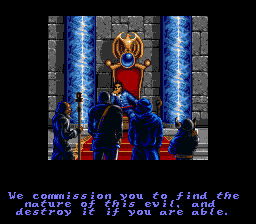

It is described as a "horrid creature" which "hugs" like a bear, and deals damage with its beak. The owl bear was introduced to the game in its first supplement, Greyhawk (1975). The owlbear is among the earliest monsters in Dungeons & Dragons, and, like the bulette and the rust monster, was inspired by a Hong Kong–made plastic toy purchased by Gary Gygax for use as a miniature in a Chainmail game. This role is also the one the owlbear was originally designed for. Within the context of RPGs, "monster" is a generic term to describe potentially hostile beings and obstacles for the players to overcome. Within the Dungeons & Dragons system and in other role-playing games, the owlbear usually serves as a "monster". In the 5th edition, some elves claim that owlbears have existed for millennia and older fey say that they have always existed in the Feywild. Within the franchise's mythology, the lich Thessalar claims to have created them, but his insanity and egomania put the accuracy of this claim in doubt.
#Eye of the beholder 3 rulebook manual
The actual in-game origin of the owlbear has never been definitively revealed, but the various Monster Manual editions indicate that it is probably the product of a wizard's experiments. In the game's third edition, it was categorized as a " magical beast". They use a "hug" and their beak to attack. According to descriptions in Dungeons & Dragons source books, owlbears are carnivorous creatures, famed for their aggression and ferocity they live in mated pairs in caves and hunt any creature bigger than a mouse. The owlbear is depicted as an eight to ten foot (2.5–3 meter) tall cross between a bear and an owl. Several of these were odd enough to catch his eye, and he used them to represent several new monsters, including the owlbear, the bulette and the rust monster. Made in Hong Kong, the set included monsters from Japanese " Kaiju" films such as Ultraman and the Godzilla franchise. On one of those occasions, he came across a bag of small plastic toys euphemistically labeled "prehistoric animals". Although he was able to draw on pulp fiction and sword and sorcery stories for many of them, he also looked through dime stores for figurines that could be used in battle. In order to give his players as many different challenges as possible, Gygax was always on the look-out for new monsters. In the early 1970s, Gary Gygax was playing Chainmail, a wargame that bore some precursors of Dungeons & Dragons.

3.2 Advanced Dungeons & Dragons 1st edition.


 0 kommentar(er)
0 kommentar(er)
